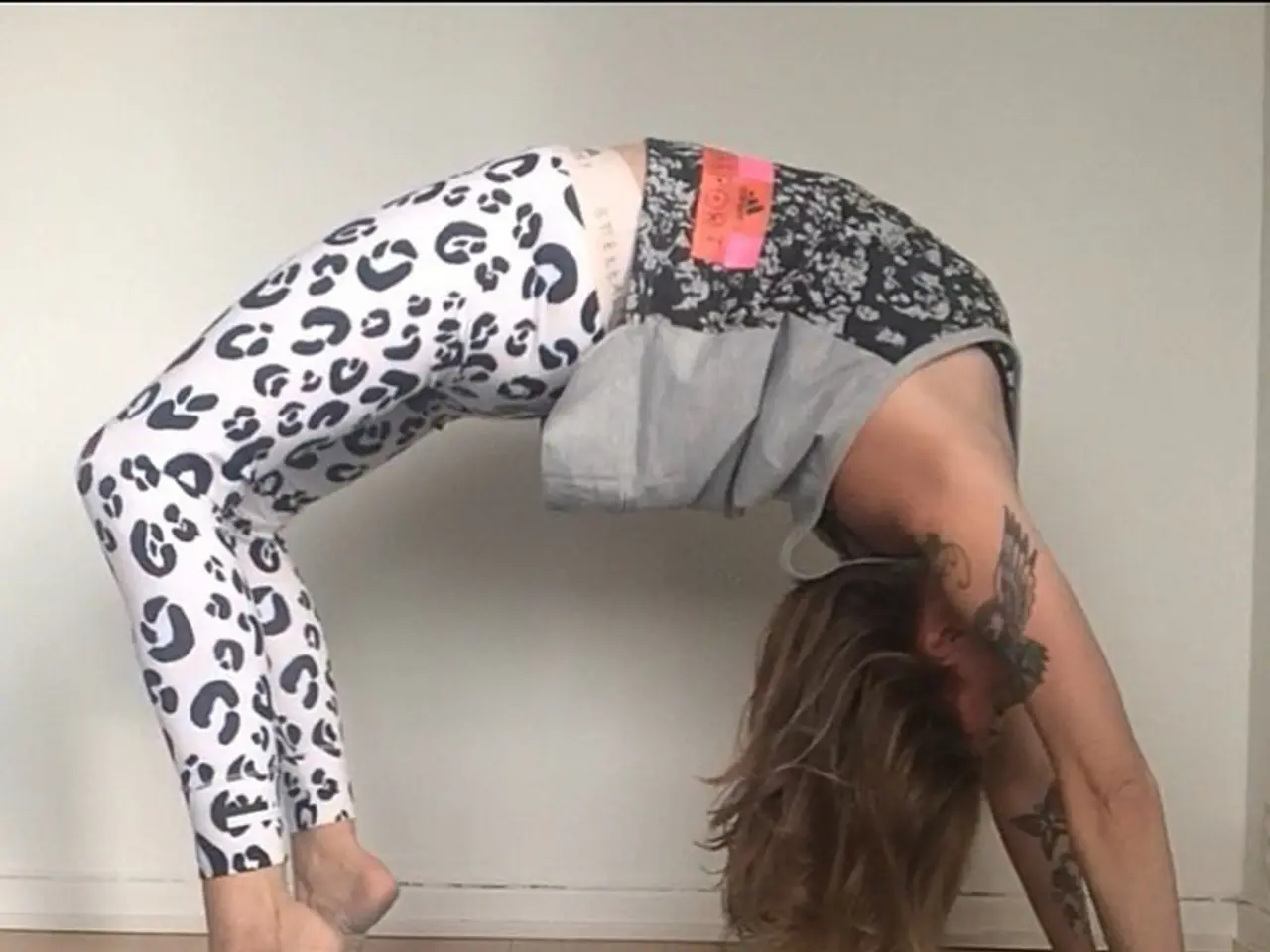Nightly Yoga Routine: Poses and Advantages
Are you having trouble falling asleep or staying asleep? Consider incorporating yoga into your nightly routine. Here's a simple, 15-minute pre-bedtime yoga sequence that can help improve your sleep quality.
The Yoga Sequence
- Warm-up and Light Stretches: Start with some gentle warm-up stretches to prepare your body for the yoga poses. Wear comfortable, breathable clothing and practice yoga in bare feet for better traction.
- Hero Pose (Virasana): Kneel on the floor, sit back, and stay for up to 5 minutes. Your thighs should turn inward, and your hands can rest palm-up on your lap.
- Child's Pose (Balasana): Kneel on the floor, bring your torso down between your thighs, and rest your shoulders on the floor. Stay for a couple of minutes, allowing your body to relax.
- Upward Dog Pose (Urdhva Mukha Svanasana): Lie stomach-down, press your hands into the floor, lift your torso and legs a few inches off the floor, and look straight ahead. Stay for up to 30 seconds.
- Knee-to-Chest Pose (Apanasana): Lie on your back, draw both knees up to your chest, and gently rock backward and forward or from side to side for up to 1 minute.
- Corpse Pose (Savasana): Lie flat on your back, extend your legs, and stay for up to 5 minutes. Ensure your back is flat against the floor, and your arms are outward and straight down.
Breathwork and Mindfulness
Incorporate calming breathwork and mindfulness into your routine to further enhance relaxation. Try the 4-7-8 Breathing technique (inhale for 4 seconds, hold for 7 seconds, exhale for 8 seconds) or Bhramari Pranayama (humming slowly during exhalation while focusing attention inward). These practices help reduce anxiety and transition your body from a sympathetic ("fight-or-flight") to a parasympathetic ("rest-and-digest") state.
Safety Precautions
- Choose gentle, non-strenuous poses to avoid energizing or stimulating your body close to bedtime.
- Avoid inversions unless you're experienced, as they may increase alertness or cause discomfort.
- Practice breathwork comfortably, never forcing breathing beyond a comfortable range. If you feel dizzy or short of breath, stop.
- Modify poses as needed using props like cushions or blankets to ensure comfort and avoid strain.
- Listen to your body. If a pose causes pain or significant discomfort, stop and try a gentler alternative.
- Remember, consistency over intensity is key. Short, calm sessions tailored to your level are more effective for sleep enhancement than long, taxing routines.
Studies suggest that regular yoga practice can help improve sleep quality, help people go to sleep faster, and alleviate insomnia symptoms. So, give this pre-bedtime yoga routine a try and enjoy a more restful night's sleep.
[1] National Sleep Foundation. (2015). Yoga for better sleep. [online] Available at: https://www.sleepfoundation.org/articles/yoga-better-sleep
[2] Henselmans, J. (2018). The science of breathwork: a comprehensive guide. [online] Available at: https://www.jameshenshelmans.com/breathwork/
[3] Irwin, M. R., Carney, C. R., & Ernst, H. G. (2013). Yoga for insomnia: a systematic review of the evidence. Journal of Clinical Sleep Medicine, 9(5), 533-540.
[4] Carlson, L. E., & Speca, M. (2008). Effects of yoga on stress and anxiety in cancer patients: a systematic review and meta-analysis. Psycho-oncology, 17(10), 1094-1103.
[5] Khalsa, S. B., & Khalsa, D. S. (2012). Healing and Preventing Burnout: Mind-Body Skills for Enhancing Your Well-Being and Resilience. New Harbinger Publications.
Engaging in the 4-7-8 Breathing technique or Bhramari Pranayama during the yoga sequence can help reduce anxiety and promote a 'rest-and-digest' state, further enhancing relaxation. Studies suggest that regular yoga practice not only improves sleep quality but also aids in falling asleep faster and alleviating insomnia symptoms, making it a beneficial addition to any health-and-wellness or mental-health routine.




